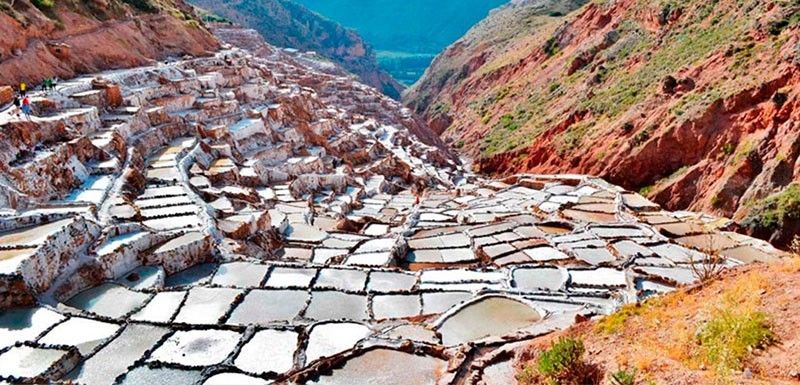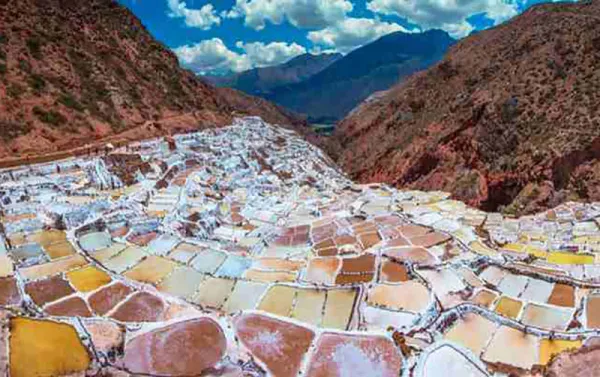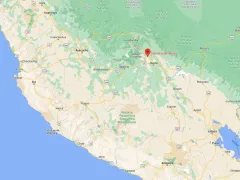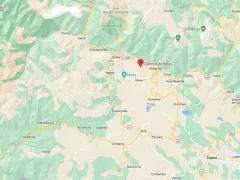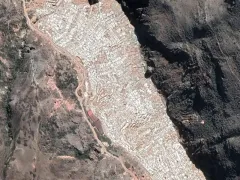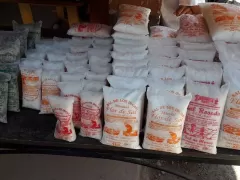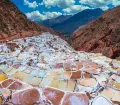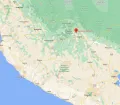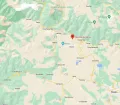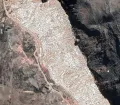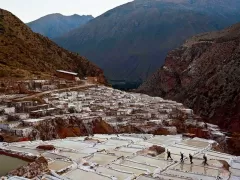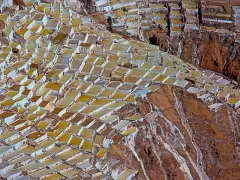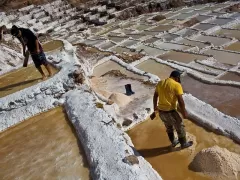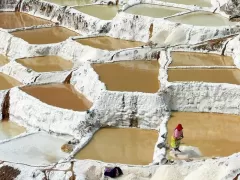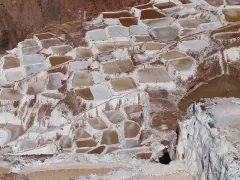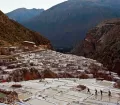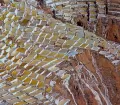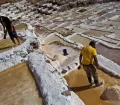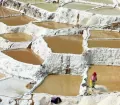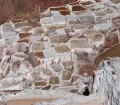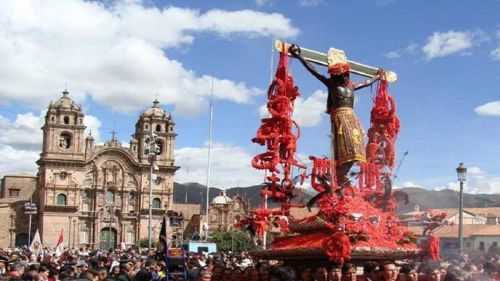Peru has so many interesting and amazing sights spread across the country that the little treasures which still represent the beauty, ancient history and old traditions of Peru like no other often have a hard time standing up to the famous and popular tourist attractions. One of these small hidden gems are the Salt Ponds of Maras.
Located just 50 km (about 30 miles) north-west of Cusco and about 16 km (10 miles) on road from Urubamba along the slopes of the Qaqawiñay mountain at an elevation of over 3,000 m (more than 10,000 ft), the “Salinas de Maras” are a truly magical place deep in the Sacred Valley.
Surrounded by an absolutely stunning scenery the salt field comprises more or less 4000 salt pans staggered down the mountainside in terraces that are maintained and worked by the families of nearby communities for around 2000 years.
While many accredit the Incas (early 13th century to 1572) with building the salt pans, the larger area of Cusco was inhabited long before the arrival of the culture that today is automatically associated with Peru. Archaeologists believe that the salt ponds were first created by the Chanapata civilization hundreds of years before the Common Era and following cultures just improved and extended the operation.
As hundreds of years ago, today the about 5 square meter large salterns are filled with the mineral-rich waters of a warm hyper-saline underground spring streaming out of the mountain and are then left.
Once the water is evaporated, the beautiful naturally pearl pink salt is hand-harvested in the dry season from May through November and sold at markets in the region. Thanks to the world-wide recognition of Peru’s natural resources and gastronomy, Maras salt today is also a sought-after product especially by chefs and gourmets around the globe and therefore exported.
What makes Maras salt so special?
According to geologist much of central Peru was covered by an ocean millions of years ago. When the Andes mountains arose, some sea water was trapped inland and by evaporation formed salt deposits imbedded in the rocks of the pushed-up sea bed. These now enrich the spring water that feeds the Maras salt evaporation ponds not only with sodium chloride (salt) but also with many natural minerals such as calcium, iron, magnesium, zinc and copper.
So the pink Maras salt is not only beautiful to look at but also provides natural sea salt and various for our body important minerals while adding a trace of light sweetness and Peruvian earthiness to any dish.
Useful information for visiting the Salt Ponds of Maras
The Salinas the Maras are a great stop when travelling through the Sacred Valley where you can probably spend an hour more or less. Admire the breathtaking landscape and the amazing terraces of drying salty water, taste the waters of the saline spring, make some stunning photos and at the end of your time at this magical place, buy the lovely packaged pink salt and various locally made products such as several salted snacks, baths salts and exfoliating scrubs offered by many vendors.
Please note: the increase in visitor numbers that the Salt Ponds of Maras experienced over the last couple of years unfortunately has its downsides: walking on the edges of the salt ponds (some) visitors not only left a trail of garbage behind including lots of plastic, cigarette butts and hair, but a few even spit or urinated into the salterns. Disgusting and not very hygienic especially when considering that here an amazing natural product for human consumption is produced. For that reason from June 15, 2019 local and foreign visitors are still welcome but won’t be allowed to enter the area of the salt crystallization pools anymore. Tours will end at the observation deck overlooking the stunning landscape and terraces of drying salty water.
A lovely day trip from Cusco often combines visiting the Salt Ponds of Maras, the Inca archaeological site of Moray with its unusual terraced circular depressions and the archaeological complex of Chinchero.
To enjoy your day in the high Andean mountains best wear comfortable and for the weather conditions appropriate clothes and especially sturdy shoes. Best bring you camera, sun lotion, a hat or cap and some water with you.
Opening hours: daily from 06.00 am to 06.00 pm - best be there before 04.00 pm to have the best light for photos.
Entrance fee: S/ 10 (only Peruvian Soles cash are accepted) which go directly to the co-operative of families working the salt ponds.
How to get to the Maras Salt Ponds
Booked tour: many tour operators in Cusco offer daily half-day or full-day tours through the Sacred Valley including Maras and Moray, sometimes as well Chinchero. The trips aren’t cheap and mostly only include the transport and an English-speaking guide.
By taxi: Cheaper and very common is booking a taxi / private driver from either Cusco, Chinchero, Ollantaytambo or Urubamba to drive you to the salt ponds and the archaeological ruins of Moray
By public transportation: Getting to the Maras Salt Ponds by public transportation is a little more difficult. First you have to get to Urubamba by bus and then take a collectivo to Moray letting you off at the Maras turn off from. From there you have to take a taxi to the salt ponds. Or continue to Moray from where you have to take a taxi to the salinas as well. Another rarely used, but stunning option is to take a bus from Urubamba to Ollantaytambo and ask the driver to let you off north of the salt ponds at the Carretera - Maras junction. From there you can hike the about 3.5km (2 miles) to the salt ponds.


